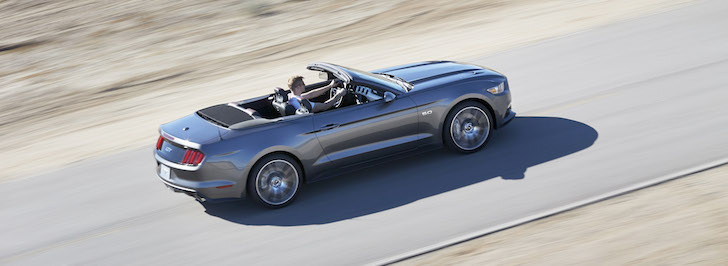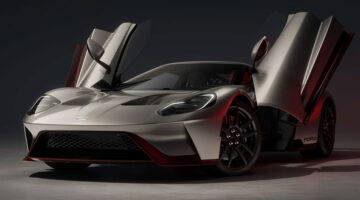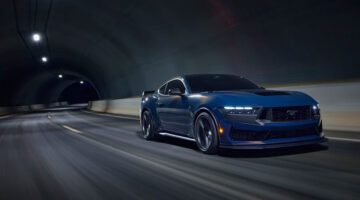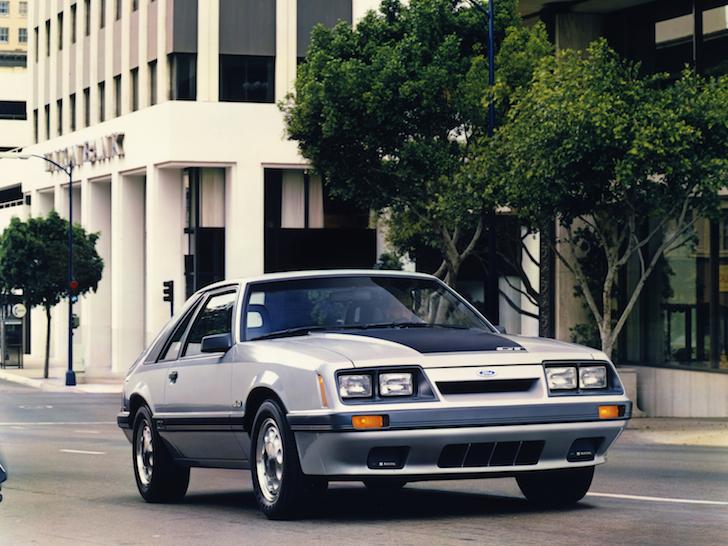
As the 80s rolled on sales slowed, and at one point Ford even considered ditching the ‘Stang in favour of a front-wheel drive car based on the Mazda MX-6. However, an outpouring of support from fans convinced the Blue Oval to keep producing its ailing pony. The front-engined Mazda instead became the Ford Probe.
Production of the Mustang was cut though, and there was little development on the car as a whole for the next few years with the introduction of a drive airbag in 1990 the biggest change.

The swansong for the sixth-gen Mustang was the SVT Cobra, something of a mongrel that raided the parts bin from several years’ models but actually turned out rather well. The V8 was tweaked to give 235bhp and the suspension and brakes were upgraded for extra sportiness. It didn’t set the world on fire, but it did mark the end of a remarkable 15-year run for a generation of Mustang that isn’t considered a classic today. A testament to its longevity is that Ford still managed to sell more than 100,000 of them in 1993.

By 1994 though, enough was enough and a new, seventh generation had to arrive. The existing, shared platform remained, but it was strengthened and atop it mounted a body that harked back once again to the original ‘Stangs of the ‘60s in its style. For the first time since the early 1970s, a convertible was designed, rather than being adapted from the coupe, and it showed in the way it drove.
Although the underlying sophistication of the seventh-generation Mustang hadn’t moved on a great deal, it nevertheless performed dynamically far better than its predecessor, despite another drop in maximum horsepower from the top-of-the-range V8.
Sales were steady, but not outstanding. The market was considerably more competitive than it had been before, but the combination of coupes and convertibles, along with special edition models like a new SVT Cobra, meant that Ford felt little need to change things for several years.

In 1996, the 5-litre V8 finally got the heave-ho, replaced by a 4.6 that gave the same power, 215bhp. The same year, a new SVT Cobra dropped that used the new engine, tweaked up to 315bhp by adding an extra overhead cam and more valves, making it the most powerful Mustang in 25 years. Sales continued to stay stable, despite little other changes during the sixth-generation’s life.
Generation eight touched down in 1999, but it was actually little more than a facelift, with new front and rear ends and litte else, save for some engine fettling. The V8 now boasted a more health 260bhp, while in the ’99 Cobra it was touted as making 320bhp. However, many owners were rather perturbed to find that they were getting less than 300bhp when they stuck their new purchases on the dyno. All 1999-2004 Cobras featured independent rear suspension, unique to the Cobras. However, it wasn’t particularly popular, and many owners swapped it out for the old live axle.
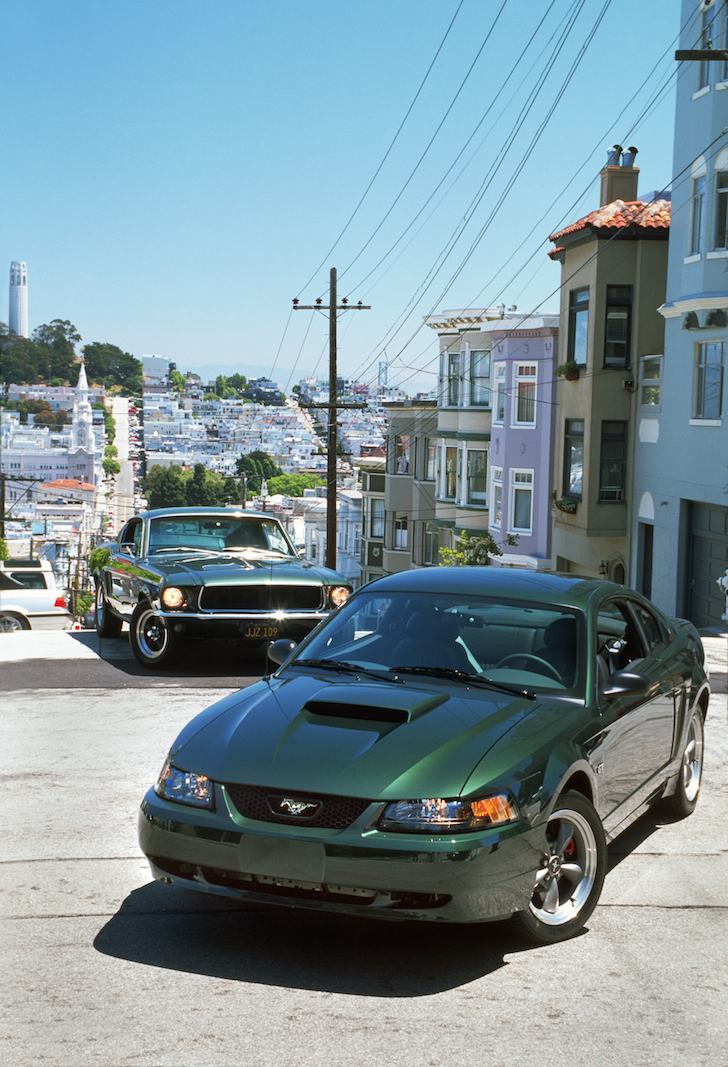
A Cobra R model was introduced in 2000, with an iron-blocked 5.4-litre V8 firing out 385bhp, and it sold out straight away. The Mustang was doing brisk business at the turn of the century, with sales topping 200,000 for the first time in more than a decade. The following year, Ford introduced a special Bullitt edition of the Mustang GT, very loosely based on the ’67 car driven by Steve McQueen in the film of the same name. More special editions followed, but by the time the 40th anniversary of the Mustang came around in 2004, Ford already knew that a dramatic reinvention was in the works.

That reinvention came in 2005, when the Fox platform used since 1979 was finally ditched, and much more modern underpinnings adopted. The design was unashamedly retro, with the balance between homage and pastiche trod very well. Based on a concept unveiled in 2003, the ninth generation Mustang finally evoked the spirit of the original, and backed it up with contemporary technology. The 4.6-litre V8 in the GT made 300bhp, and the old four-speed transmissions were ditched in favour of five-speeds. While the live rear axle remained in concept, all the suspension was dramatically improved for better handling and performance. The new Mustang was acclaimed, washing away decades of disappointing ‘Stangs and ushering in a new era.
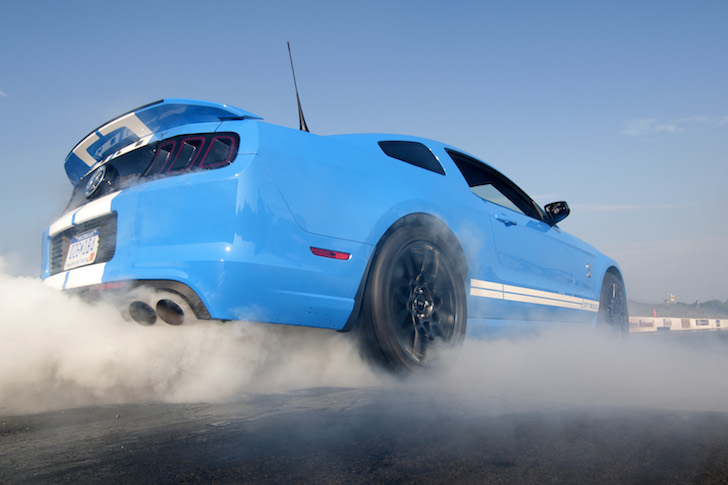
While the SVT Cobra didn’t make a reappearance, the Shelby name did, with the GT500 appearing in 2007. It got progressively more insane – in the best possible way – and by last year produced a ridiculous 662bhp from its 5.8-litre supercharged V8. Compare that to the outputs seen a decade or two previously.

And now, we have the all-new 2015 model-year ‘Stang – officially, it’s known as the sixth-generation, but as far as we’re concerned, it’s the tenth.. Although the references to the past remain, the new car is more modern and futuristic. Work started on the new car in 2009, with a brief to produce a car deserving of a 50th anniversary with as few restrictions on the team as was possible. Other than the wheelbase, everything on the car is new – it’s no longer hamstrung by what went before in terms of technical development. The major technical news is the rear suspension, which is independent for the first time. Heresy? Well, perhaps to the hardcore Mustang fans, but this car will be sold worldwide, not just in previous Mustang heartlands, so it needed to compete solidly with sophisticated rivals. Beefing up the rear meant the front suspension had to be overhauled too. The result is a world away from Mustangs that have gone before.
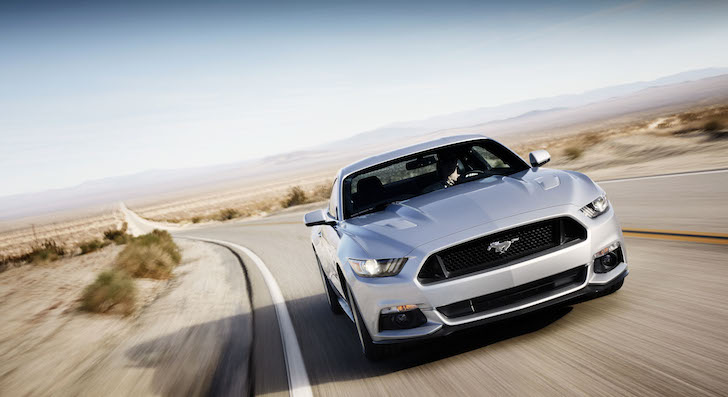
The new car will be available in fastback and convertible forms, with hatchback and notchback models considered and then ditched. Engine-wise, the familiar 5-litre V8 returns, and there’s an EcoBoost V6 with more than 300bhp – a figure lauded just a few years previously when it appeared from the V8! For the first time in decades, there will also be a four-cylinder turbocharged engine, again to appeal to foreign markets. But with engine technology considerably more advanced, there are no fears that it will be as shoddy as the blown four-pot of old.
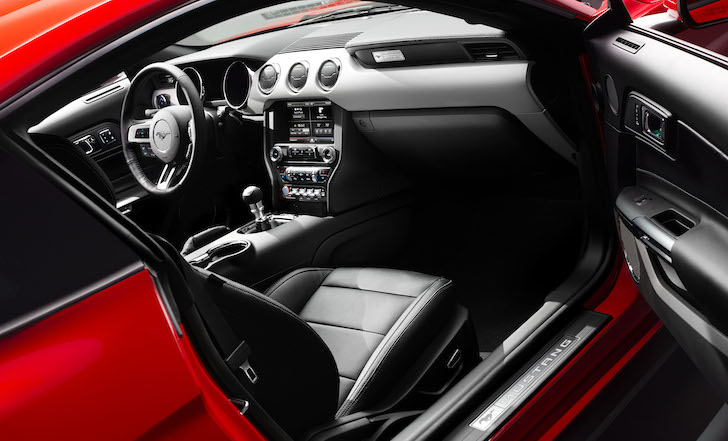
Performance has also been kept in mind, as one would expect from a Mustang. But it’s not just about muscle car performance. The design team benchmarked the likes of the Porsche 911, the BMW M3 and even the mighty Nissan GT-R – competition that would have been unthinkable in previous generations. Only budget has reigned in the ambition of the team – the Mustang still has to live up to its roots of blue-collar performance, so don’t expect the latest, jazziest gizmos. Fans of carbonfibre and ceramic brakes might have to go elsewhere. But Ford boasts that the new ‘Stang will hold its own against cars costing considerably more.
Much has been made of the half-century celebrations of the Porsche 911 as the pinnacle of sporting design. But the Mustang remains an achievable goal for the everyman. It’s not had a smooth ride over its five decades, but going into its sixth, it’s looking stronger, and more dynamic, then ever before. We can’t wait to get our hands on the new one.
